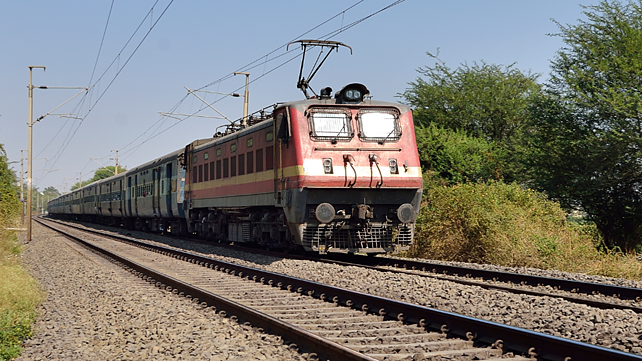
Indian Railways, one of the world’s largest rail networks spread over 68,400 route km, aims to become the largest “Green Railways” in the world and is moving towards becoming a “net zero carbon emitter” before 2030.
Towards achieving this target, the Indian Railways is looking at helping the environment with steps ranging from massive electrification, water & paper conservation, to saving animals from being injured on railway tracks.
Electrification in Indian Railways has increased nearly 10 times since 2014, claimed a release by the Ministry of Railways.
Capturing the economic benefits of electric traction in an accelerated manner, Railways has planned to electrify balance broad gauge (BG) routes by December 2023 to achieve 100% electrification of BG routes. Head-On-Generation systems, bio-toilets and LED lights recreate the train itself into a travel mode that’s kinder to the environment, while maintaining comparable passenger comfort, said the release.
Apart from its focus on electrification, Indian Railways is developing its dedicated freight corridors as a low carbon green transportation network with a long-term low carbon roadmap, which will enable it to adopt more energy efficient and carbon-friendly technologies, processes and practices.
Currently, two dedicated freight corridors are being implemented – the Eastern Corridor (EDFC) from Ludhiana to Dankuni (1,875 km) and Western Corridor (WDFC) from Dadri to Jawaharlal Nehru Port Trust (1,506 km). The Sonnagar-Dankuni (538 km) portion of EDFC has been planned for execution on Public Private Partnership (PPP) mode.
Green Certifications, Environment Management System implementation
Green certification mainly covers assessment of parameters having direct bearing on the environment, such as, energy conservation measures, use of renewable energy, Green House Gas emission reduction, water conservation, waste management, material conservation, recycling etc.
It was in July 2016 that the Indian Railways had signed a MoU with the Confederation of Indian Industry for facilitation of green initiatives. Until now, 39 railways workshops, seven production units, eight loco sheds and one stores depot have been ‘GreenCo’ certified, with two ‘Platinum’, 15 Gold and 18 Silver ratings.
Green certifications have also been issued to 19 railway stations and 27 railway buildings, offices, campuses and other establishments. In addition, over 600 railway stations have been certified for implementation of the Environment Management System ISO:14001 in the last two years, taking the total to 718 stations to have been identified for ISO:14001 certification.